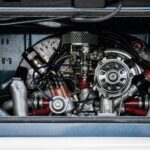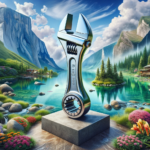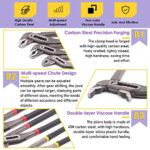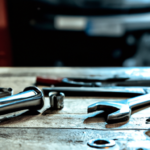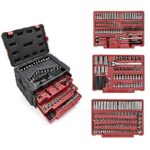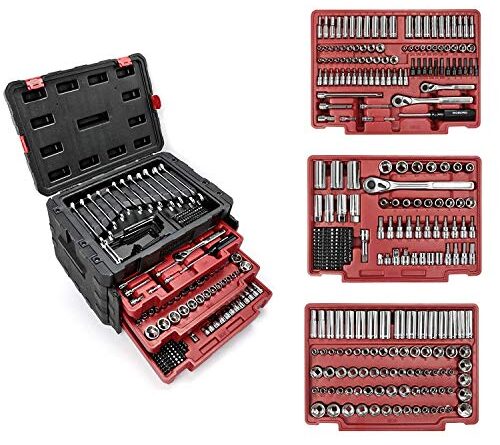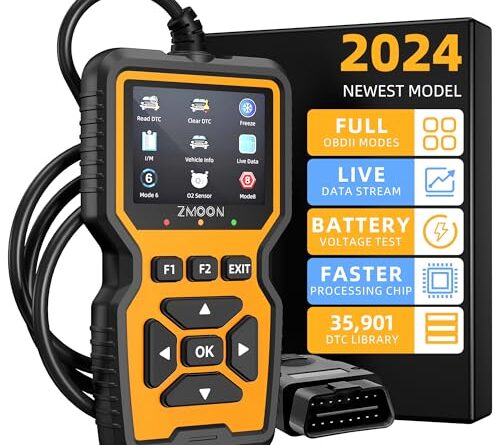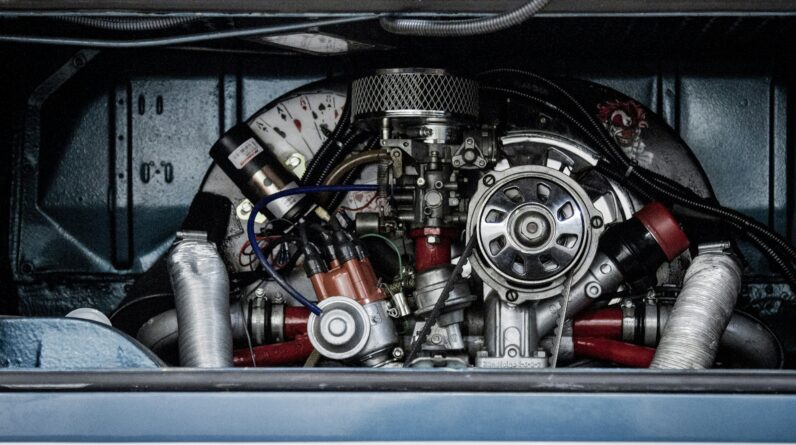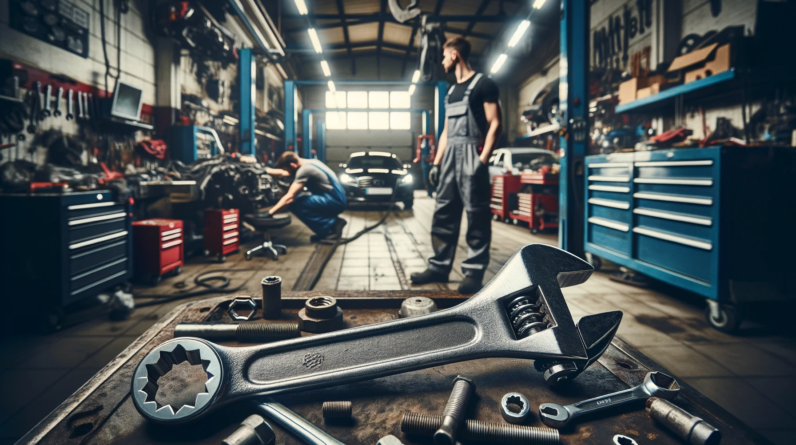
Disclaimer: This post may contain affiliate links. As an Amazon Associate, we earn from qualifying purchases.
Have you ever come across the term “monkey wrench” and wondered what it actually means? Well, let’s unravel this mystery together. The monkey wrench, also known as an adjustable wrench, is a versatile and essential tool that has been used for decades in various industries. Its name might leave you scratching your head, but fear not, for we are here to shed some light on the origins and uses of this fascinating tool.
So, get ready to discover the fascinating world of the monkey wrench and how it has become an indispensable tool in the hands of many!
Definition
A monkey wrench is a type of tool that is widely used for turning nuts and bolts. It is characterized by its adjustable jaw, which allows it to fit onto nuts and bolts of different sizes. The name “monkey wrench” is thought to have originated from the tool’s resemblance to the face of a monkey, with its adjustable jaw resembling the monkey’s mouth.
Origin
The exact origin of the monkey wrench is unclear, but its use can be traced back to the early 19th century, when it was primarily used in the plumbing and mechanical repair industries. The first patent for a monkey wrench was granted to an Englishman named Charles Moncky in 1858.
However, there were similar tools in use prior to this patent, suggesting that the tool had already been in existence.
Description
The monkey wrench consists of a straight handle with a fixed jaw at one end and an adjustable jaw at the other. The fixed jaw is typically used to hold the nut or bolt in place, while the adjustable jaw can be moved to fit different sizes of nuts and bolts.
The adjustable jaw is controlled by a worm gear, which allows for precise adjustments. The tool is typically made of steel and has a sturdy construction to withstand the torque applied during operation.
Usage
The monkey wrench is a versatile tool that can be used in a variety of applications. Its primary purpose is for turning nuts and bolts, making it essential in plumbing, mechanical repair, automotive, and construction industries. The adjustable feature of the monkey wrench allows it to fit onto nuts and bolts of different sizes, making it suitable for various tasks.
From tightening pipes to loosening stubborn bolts, the monkey wrench is a go-to tool for many professionals and DIY enthusiasts alike.
Types
There are several types of monkey wrenches available, each with its own unique features and applications. Here are the most common types:
Adjustable Monkey Wrench
The adjustable monkey wrench, also known as the adjustable end wrench, is the most common type of monkey wrench. It features an adjustable jaw that can be moved to fit nuts and bolts of different sizes. The adjustable jaw is controlled by a worm gear mechanism, allowing for precise adjustments.
This type of monkey wrench is highly versatile and widely used in various industries.
Pipe Wrench
The pipe wrench, also referred to as a Stillson wrench after the famous brand, is a type of monkey wrench specifically designed for working with pipes. It has sharp, serrated teeth on its adjustable jaw that dig into the pipe’s surface, providing a strong grip.
Pipe wrenches are commonly used in plumbing applications to tighten or loosen pipe fittings.
Box-End Wrench
The box-end wrench, also known as the closed-end wrench or the spanner wrench, is another variation of the monkey wrench. It features a closed-end jaw with a box-shaped design, which provides a secure grip on nuts and bolts. Box-end wrenches often come in sets with different sizes, allowing for greater versatility and ease of use.
Offset Wrench
The offset wrench, also called the bent-handle wrench, is a specialized type of monkey wrench with a unique design. It is characterized by its bent handle, which allows for better access to tight spaces. The offset wrench is commonly used in automotive applications, where there is limited space to maneuver.
Evolution of Monkey Wrench
Throughout history, the monkey wrench has undergone various changes and improvements. Let’s take a closer look at the evolution of this versatile tool.
Early Wrenches
Before the invention of the monkey wrench, there were similar tools in use, such as the English key and the coach wrench. These early wrenches were large and heavy, making them less practical for everyday use. However, they laid the foundation for the development of the modern monkey wrench.
Invention of Adjustable Wrench
The invention of the adjustable wrench revolutionized the tool industry. It allowed for easy adjustment of the wrench’s jaw size, eliminating the need for multiple wrenches of different sizes. The first patent for an adjustable wrench was granted to Charles Moncky in 1858.
This marked a significant advancement in wrench technology and made the tool more versatile and user-friendly.
Improvements over Time
Since its invention, the monkey wrench has undergone continuous improvements. Manufacturers have introduced better materials, stronger construction, and more precise adjustment mechanisms. The worm gear, which controls the adjustable jaw, has become more refined, allowing for smoother operation and increased accuracy.
Today, monkey wrenches are produced in a variety of sizes, designs, and materials to meet the diverse needs of different industries.
Famous Brands
Several brands have made a name for themselves in the world of monkey wrenches. These brands have gained recognition for their high-quality tools and innovative designs. Here are some of the most famous monkey wrench brands:
Stillson Wrench
The Stillson wrench is arguably the most well-known brand of pipe wrenches. Originating from the United States, Stillson wrenches are widely used in plumbing applications.
They are known for their durability, gripping power, and ability to handle the demands of heavy-duty pipe work. Stillson wrenches have become a trusted choice among professionals and DIYers when it comes to pipe-related tasks.
Coes Wrench
Coes wrenches have a long history dating back to the mid-19th century. They were one of the earliest manufacturers of monkey wrenches in the United States and played a significant role in the early development of the tool. Coes wrenches are renowned for their sturdy construction and precision, making them a favorite among collectors and enthusiasts.
Proto Wrench
Proto is a leading brand in the hand tool industry, and their monkey wrenches are no exception. Known for their high-quality craftsmanship and innovative designs, Proto wrenches offer exceptional durability and performance.
Professionals rely on Proto wrenches for their precision, ease of use, and comfortable grip, making them a go-to choice for demanding tasks.
Channellock Wrench
Channellock is a well-respected name in the tool industry, and their monkey wrenches are highly regarded. Channellock wrenches are designed with the user in mind, with features like an ergonomic handle and a smooth-adjusting jaw.
Their wrenches are known for their strength, durability, and ability to provide a secure grip, making them a popular choice among tradespeople.
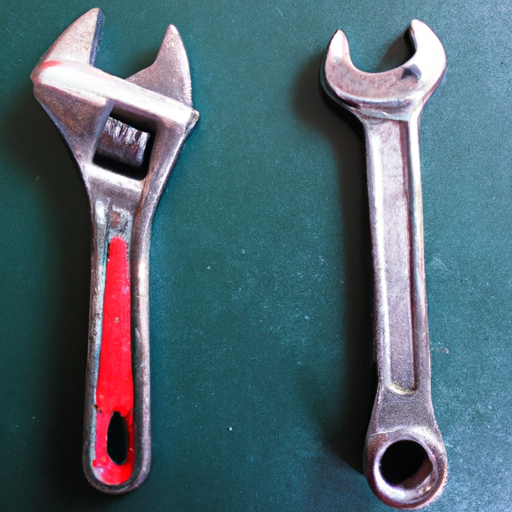
Notable Applications
The monkey wrench has found its place in various industries and is used for a wide range of applications. Here are some notable uses of the monkey wrench:
Plumbing
Plumbers heavily rely on monkey wrenches for their pipe and fitting work. Whether it’s tightening or loosening pipe connections, installing or removing plumbing fixtures, or repairing leaks, the monkey wrench is a plumber’s indispensable tool.
Its adjustable jaw enables plumbers to work with pipes of different sizes, while pipe wrenches offer an even stronger grip for dealing with tough pipe fittings.
Mechanical Repair
In mechanical repair, the monkey wrench comes in handy for tightening or loosening nuts and bolts in machinery and equipment.
From working on engines to fixing appliances, the adjustable nature of the monkey wrench allows it to fit various fasteners. It is especially useful in situations where a socket wrench or a box-end wrench cannot be easily used.
Automotive
Automotive mechanics often rely on monkey wrenches to tackle a variety of tasks. They use them to loosen and tighten nuts and bolts in engines, suspension systems, and other components.
The adjustable and offset wrenches are particularly useful in tight spaces where traditional wrenches may not fit. Monkey wrenches are essential for a range of automotive repairs and maintenance procedures.
Construction
The construction industry also benefits greatly from the versatility and strength of monkey wrenches. When constructing buildings, bridges, or other structures, workers use monkey wrenches for various tasks, including assembling scaffolding, tightening or loosening bolts in steel frames, and securing fasteners in wooden structures.
The adjustable feature of the monkey wrench allows workers to quickly switch between different-sized fasteners, saving time and effort.
Differences from Other Wrenches
While there are many types of wrenches available, the monkey wrench stands out in several ways. Here are some of the key differences between the monkey wrench and other wrenches:
Versatility
One of the main advantages of the monkey wrench is its versatility. Unlike socket wrenches or box-end wrenches, the monkey wrench has an adjustable jaw, allowing it to fit various sizes of nuts and bolts. This versatility eliminates the need for carrying around multiple wrenches of different sizes, making it a convenient option in many situations.
Capabilities
The monkey wrench’s adjustable jaw gives it a wider range of capabilities compared to other wrenches. It can be used on hexagonal, square, and rounded-off fasteners, making it suitable for various tasks. Additionally, the pipe wrench variation of the monkey wrench provides a strong grip on pipe fittings, enhancing its capabilities in plumbing and pipe-related applications.
Design Differences
The design of the monkey wrench sets it apart from other wrenches. Its curved handle design allows for a better grip and increased leverage, making it easier to apply torque. The adjustable jaw is another distinguishing feature, allowing for precise adjustments to fit different sizes of nuts and bolts. Other wrenches, such as box-end wrenches and socket wrenches, have specific jaw sizes and cannot be adjusted.
Common Misconceptions
Despite its widespread usage, there are a few common misconceptions surrounding the monkey wrench that are worth debunking.
Usage as a Verb
One misconception is using the term “monkey wrench” as a verb, often meaning to sabotage or disrupt a process. While it is true that the phrase “to throw a monkey wrench into the works” exists and implies causing problems or hindrances, it is not directly related to the tool itself.
This idiomatic expression derived from the idea of someone literally throwing a wrench into machinery, causing it to malfunction. Nevertheless, the tool itself is meant for constructive purposes and not for causing trouble.
Misidentification as Crescent Wrench
Another misconception is misidentifying the monkey wrench as a crescent wrench. While crescent wrenches and monkey wrenches are similar in appearance, they are different tools.
Crescent wrenches have a movable jaw that can be adjusted using a screw mechanism, while monkey wrenches have an adjustable jaw operated by a worm gear. The terms “crescent wrench” and “monkey wrench” are often used interchangeably, leading to confusion. However, it is important to recognize the distinct characteristics of each tool.
Safety and Proper Use
Safety should always be a top priority when using any type of tool, including the monkey wrench. Here are some important safety tips and proper usage guidelines to keep in mind:
Appropriate Torque
It is crucial to apply the appropriate torque when using a monkey wrench to avoid damaging fasteners or equipment. Over-tightening can lead to stripped threads or breakage, while under-tightening can result in loose connections. Following manufacturer instructions and using a torque wrench when necessary can help ensure the proper application of torque.
Checking for Wear and Damage
Regularly inspecting your monkey wrench for wear and damage is essential for safe and effective use. Look for signs of corrosion, cracks, or any other defects that could compromise the tool’s integrity. If any damage is detected, replace the wrench immediately to prevent accidents or further damage.
Avoiding Slippage
To minimize the risk of slippage, ensure that the monkey wrench’s adjustable jaw is firmly gripping the fastener before applying force. Position the wrench at a right angle to the fastener and ensure that the jaw is centered and secured.
Avoid using excessive force or applying torque at awkward angles, as this can lead to slippage and potential hand injuries.
Modern Alternatives
While the monkey wrench remains a popular and reliable tool, there are also modern alternatives available that offer different features and advantages. Here are a few notable alternatives to consider:
Adjustable Wrenches
Adjustable wrenches, often referred to as crescent wrenches, provide similar functionality to monkey wrenches. They have a movable jaw that can be adjusted to fit different sizes of nuts and bolts. Adjustable wrenches are typically lighter and more compact than monkey wrenches, making them easier to carry and maneuver in tight spaces.
Socket Wrenches
Socket wrenches are commonly used for tasks that require high torque, such as automotive repairs. They consist of a ratcheting handle and interchangeable sockets that fit onto bolts and nuts. While socket wrenches excel in terms of torque application and precision, they may not be as versatile as monkey wrenches due to their fixed socket sizes.
Ratcheting Wrenches
Ratcheting wrenches combine the convenience of a socket wrench with the flexibility and adjustability of a monkey wrench.
They feature a ratcheting mechanism that allows for fast and efficient tightening or loosening of fasteners.
Ratcheting wrenches are especially useful in confined spaces where a standard socket wrench or monkey wrench may be difficult to use.
In conclusion, the monkey wrench is a versatile and indispensable tool in a variety of industries. Its adjustable jaw, sturdy construction, and wide range of applications make it a go-to tool for professionals and DIY enthusiasts. From plumbing to mechanical repair, automotive to construction, the monkey wrench has stood the test of time with its functionality and adaptability. So next time you’re faced with a stubborn nut or bolt, remember to reach for your trusty monkey wrench and tackle the task with ease.




